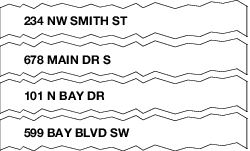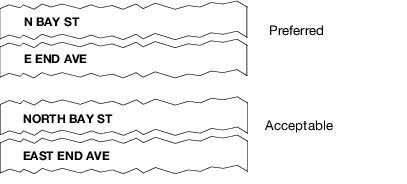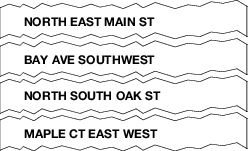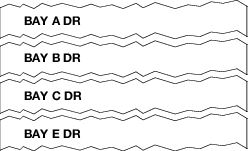This is a term the Postal Service uses to refer to the part of the address that gives directional information for delivery (i.e., N, S, E, W, NE, NW, SE, SW).
Abbreviate directionals (if they are one of the eight standard directionals listed in AIS files) to the appropriate one– or two–character abbreviation.

When parsing the address from right to left, if a directional word is found as the first word in the street name and there is no other directional to the left of it, abbreviate it and locate it in the predirectional field of the ZIP+4 file for standardization purposes.

When parsing from right to left, if a directional word is located to the right of the street name and suffix, abbreviate it and locate it in the postdirectional field.

When two directional words appear consecutively as one or two words, before the street name or following the street name or suffix, then the two words become either the pre– or the postdirectionals. Exceptions are any combinations of NORTH-SOUTH or EAST–WEST as consecutive words. In these cases the second directional becomes part of the street name and is spelled out completely in the street name field.

The other exception is when the local address information unit has determined that one of the directional letters is used as an alphabet indicator and not as a directional.

Note: In this example, the two–word directional is the primary street name.

When parsing from right to left, if the directional word appears between the street name and the suffix, then it appears as part of the street name spelled out in the ZIP+4 file and is spelled out on the mailpiece.

The exception is when the local AIS unit has determined that the letters (E, N, S, or W) are used as alphabet indicators and not as directionals.
